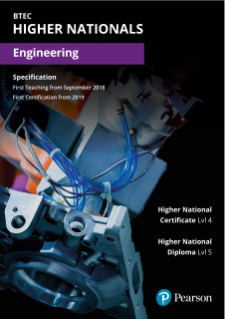Engineering and Manufacturing
January 2026 Engineering update
BTEC Nationals Engineering (AAQ)
Multi-factor Authentication for Edexcel Online
BTEC Nationals Level 3 in Engineering - Guidance on Unit 6
January 2026 Engineering update
BTEC Nationals Engineering (AAQ)
BTEC Nationals Engineering (AAQ)
A dedicated support page for the new BTEC Nationals in Engineering, with essential guidance, downloadable templates, training links, and materials to support qualification delivery.
Multi-factor Authentication for Edexcel Online
BTEC Nationals Level 3 in Engineering - Guidance on Unit 6
January 2026 Engineering update
BTEC Nationals Engineering (AAQ)
Multi-factor Authentication for Edexcel Online
Multi-factor Authentication for Edexcel Online
Make sure your MFA is set for Edexcel Online!
BTEC Nationals Level 3 in Engineering - Guidance on Unit 6
January 2026 Engineering update
BTEC Nationals Engineering (AAQ)
Multi-factor Authentication for Edexcel Online
BTEC Nationals Level 3 in Engineering - Guidance on Unit 6
Subject advisor
Evren Alibaba
Engineering

Introducing Evren Alibaba, our Subject Advisor for Construction, Design and Technology, and Engineering

His role is to support you with the delivery of our qualifications, to help you understand the content and the assessment requirements and to answer any subject-specific queries you may have.
Popular topics
Below you can find our current popular topics from the Engineering sector.
An updated version (issue 8) of the BTEC Nationals in Engineering (RQF) specification has been published and includes the following changes:
Amendments to units
Unit 16: Three Phase Electrical Systems Content and Assessment criteria for Learning aim C to replace ‘domestic’ with ‘industrial/commercial’ and clarify the wording in criterion C.D3.
Unit 19: Electronic Devices and Circuits Content for B3, Assessment criteria for Learning aim B and Essential information for assessment decisions section Learning aim B Distinction and Merit standard.
Unit 54: Aircraft Electrical and Instrument Systems Assessment criteria and Essential information for assessment decisions for Learning aim C to replace ‘assemble’ with ‘inspect’.
You can access the summary of changes in the initial pages of each specification and the above changes are sidelined in relevant pages.
Please note that the Authorised Assignment Briefs for these units are not yet updated. If you deliver these units, please adapt your assignment briefs with the most up to date information from the specification.
New units
unit 57: Sustainable transport
Unit 58: Energy management
You can access the summary of changes in the initial pages of each specification and the above changes are sidelined in relevant pages.
Please note that the Authorised Assignment Briefs for these new units are not yet available.
Part of the externally-set task is for each learner to produce an audio-visual recording of their system in operation. The recording does not have to be part of the 12 hours allocated for the supervised assessment period, but it must be completed within the Pearson set period. If a learner finishes the task in less than 12 hours then they should record their system in operation and the recording can be restarted to improve the quality of the evidence, but each learner must only submit one recording.
Learners who are working until the end of the supervised period must stop all development activities after 12 hours duration. Centres must organise any outstanding recordings to take place as soon as possible after the end of the session (given possible equipment constraints). In this situation, learners cannot continue to work on their prototype system and must only make one recording, even if it includes 'false-starts'.
The audio-visual recording must be made under controlled conditions. It must be a complete, unedited recording of each learner's system in operation. The recordings and learner's electronic task booklet / the physical storage devices must be safely stored e.g. in the exams office, until it is time to submit the work to the examiner.
The audio-visual equipment must be positioned to ensure that the best possible quality and unobstructed recording is made of the prototype system in operation. You must ensure that any electronic devices used e.g. LEDs and LCD displays, monitor screens and the learner's centre and candidate number are clearly picked up by the audio-visual equipment.
Learners should produce and deliver all recordings on their own. Due to the nature of the task, it is not permitted that they complete the task with a partner or in a small group. Teachers are not permitted to question, prompt or assist the learner. The length of the recording should be within the maximum 3 minutes duration allowed and any recordings that are substantially longer than this may not attract the full range of marks.
Find and book events
Find all the latest training and feedback events for Engineering.


